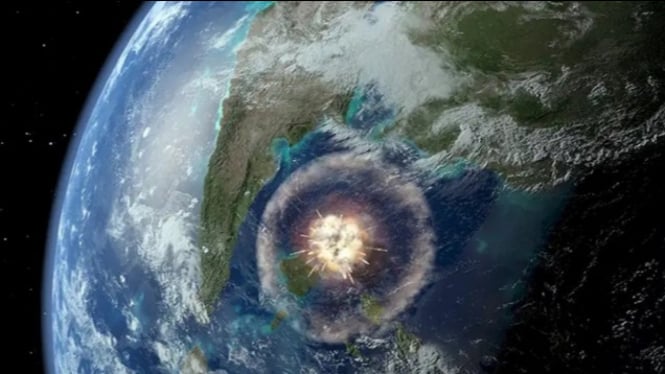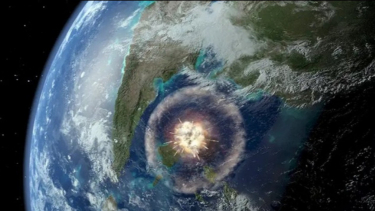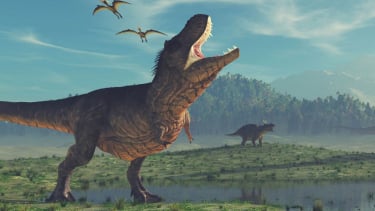Asteroid Causes Dinosaurs Extinction and Big Earthquakes
- U-Report
VIVA – An asteroid that hit the earth 66 million years ago, managed to wipe out the dinosaurs and it turns out that created a large earthquake that shook the earth for weeks or months.
This statement was revealed by a recent study at Montclair State University, New Jersey which showed that the asteroid also triggered an earthquake that released 50,000 times more energy than that released by a 9.1-magnitude earthquake that hit Sumatra in 2004.
Geologist at Montclair State University in New Jersey, Hermann Bermudez, assessed the magnitude of the earthquake triggered by the Chicxclub impact by visiting mass extinction events located in Texas, Alabama, and Mississippi as quoted from Space site, Monday, October 10, 2022.
On Columbia's Gorgonilla Island, about 1,900 miles (3,000 km) from the site of the Chicxulub impact, geologists have discovered layers of sediment containing spherical deposits.
Ilustrasi Dinosaurus.
- NY Post
Then, Spherules are tiny glass beads no bigger than a grain of sand that is formed when the heat and pressure from a massive impact melt material from the Earth's crust and eject it into the atmosphere and cool down into glass beads, and then fall back to Earth.
In addition to spherules, Bermúdez also found in the same sediment more shard-like tektites and microtektites, which also represent material ejected into the atmosphere during an asteroid impact.
Spherules and tektites found along the coast of Gorgonilla Island reveal what happened on the ocean floor about 2 km underwater around the time of the asteroid's impact.
When the Chicxulub impactor hit Earth, the layers of mud and sandstone 10 to 15 meters below the seafloor deformed. Bermúdez thinks that this deformation is maintained in outcrops, and was caused by the shock of the impact.
The faults and deformations that are the geological features of this shock continue into the spherical-rich sediment layer.
These layers must have been deposited after the impact, but because these layers took time to accumulate, Bermúdez hypothesized that the shock triggered by the collision continued for weeks or even months.
Bermúdez also found evidence of large earthquakes triggered by the Chicxulub impact in the geological record in Mexico, where he found signs of liquefaction, where the strong shaking caused water-saturated sediments to flow like liquids.
In addition, in Mississippi, Alabama, and Texas, Bermúdez observed faults and fractures that are also likely associated with the large earthquake caused by the Chicxulub impact.
Some of the outcrops also show signs of sediment left by the massive tsunami waves that were also triggered by a large asteroid impact on Earth.





























